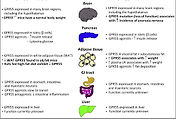J Physiol Biochem. 2018 May;74(2):261-272. doi: 10.1007/s13105-018-0611-7. Epub 2018 Feb 13.
자궁내막 암세포에서 칸나비노이드-유발 세포사멸: TRPV1 수용체가 세포사멸에 관여.
Cannabinoid-induced cell death in endometrial cancer cells: involvement of TRPV1 receptors in apoptosis.
Fonseca BM1, Correia-da-Silva G2, Teixeira NA2.
요약 Abstract
다양한 식물칸나비노이드(phytocannabinoids) 중에서 Δ9-tetrahydrocannabinol (THC)과 cannabidiol (CBD)이 가장 유망한 치료 화합물입니다.
칸나비노이드는 암 환자에서 잘 알려진 완화작용 외에도 종양 세포의 시험관내 성장을 억제하는 것으로 나타났습니다.
마찬가지로, 주요 체내칸나비노이드(eCBs)인, 아난다마이드(anandamide, AEA) 및 2-arachidonoylglycerol(2-AG)다 종양 세포죽음을 유도합니다.
Among a variety of phytocannabinoids, Δ9-tetrahydrocannabinol (THC) and cannabidiol (CBD) are the most promising therapeutic compounds. Besides the well-known palliative effects in cancer patients, cannabinoids have been shown to inhibit in vitro growth of tumor cells. Likewise, the major endocannabinoids (eCBs), anandamide (AEA) and 2-arachidonoylglycerol (2-AG), induce tumor cell death.
본 연구의 목적은 칸나비노이드 요소를 특성화하고 칸나비노이드가 자궁내막 암세포 생존능력에 미치는 영향을 평가하는 데 있었습니다.
칸나비노이드 전문
돕자몰
www.dopza.com
칸나비노이드 수용체, 일시적 수용체 전위 바닐로이드1(TRPV1) 및 체내칸나비노이드-대사 효소의 존재는 qRT-PCR 및 웨스턴 블롯에 의해 결정되었습니다.
The purpose of the present study was to characterize cannabinoid elements and evaluate the effect of cannabinoids in endometrial cancer cell viability. The presence of cannabinoid receptors, transient receptor potential vanilloid 1 (TRPV1), and endocannabinoid-metabolizing enzymes were determined by qRT-PCR and Western blot.
자궁내막 암세포의 생존력에서 eCB와 식물칸나비노이드에 의해 유발된 효과와 근본 메커니즘에 대해서도 조사했습니다.
TRPV1 외에, 두 EC 세포주는 체내칸나비노이드 체계(ECS)의 모든 성분을 발현합니다.
We also examined the effects and the underlying mechanisms induced by eCBs and phytocannabinoids in endometrial cancer cell viability. Besides TRPV1, both EC cell lines express all the constituents of the endocannabinoid system.
5 μM 이상의 농도에서 eCB와 CBD가 Ishikawa와 Hec50co 세포에서 세포 생존력을 현저하게 감소시키는 반면, THC는 효과를 나타내지 않는다는 것을 관찰했습니다.
We observed that at concentrations higher than 5 μM, eCBs and CBD induced a significant reduction in cell viability in both Ishikawa and Hec50co cells, whereas THC did not cause any effect.
Ishikawa 세포에서 Hec50co와는 반대로 AEA와 CBD로 처리하면, 활성화된 카스파제 -3/-7 레벨에서, 절단된 PARP에서, 그리고 반응성 산소 종 생성이 증가하여, MTT 분석으로 관찰된 세포내 생존율 감소가
세포사멸 경로의 활성화에 의해 야기되었다는 것을 확인시켜 주었습니다.
In Ishikawa cells, contrary to Hec50co, treatment with AEA and CBD resulted in an increase in the levels of activated caspase -3/-7, in cleaved PARP, and in reactive oxygen species generation, confirming that the reduction in cell viability observed in the MTT assay was caused by the activation of the apoptotic pathway.
마지막으로, 이러한 효과는 TRPV1 활성화 및 세포내 칼슘 수준에 달려있습니다.
이러한 데이터는 칸나비노이드가 자궁내막 암세포를 조절한다는 것을 나타냅니다.
AEA, CBD 또는 다른 안정된 유사물질에 의한 TPRV1의 선택적 타겟화는 에스트로겐 의존성 자궁내막암의 치료를 위한 매력적 연구 영역이 될 수 있습니다.
데이터는 CBD와 CBD-풍부 추출물의 자궁내막암에 대한 잠재적 치료, 특히 일반으로 치료되지 않는 치료에 대한 평가를 뒷받침합니다.
Finally, these effects were dependent on TRPV1 activation and intracellular calcium levels. These data indicate that cannabinoids modulate endometrial cancer cell death. Selective targeting of TPRV1 by AEA, CBD, or other stable analogues may be an attractive research area for the treatment of estrogen-dependent endometrial carcinoma. Our data further support the evaluation of CBD and CBD-rich extracts for the potential treatment of endometrial cancer, particularly, that has become non-responsive to common therapies.
KEYWORDS: Apoptosis; Endocannabinoids; Endometrial cancer; Phytocannabinoids
PMID: 29441458
'암 항암 암치료 CBD오일 칸나비노이드' 카테고리의 다른 글
| 종양 전이 Tumor metastasis는 암의 최종적 치명적 단계이지만, THC와 CBD가 이를 막을 수 있다는 연구 결과가 있습니다. (0) | 2018.07.17 |
|---|---|
| 암세포증식을 촉진하는 GPR55에 반작용하는 CBD (0) | 2018.07.08 |
| 암 항암 - 칸나비노이드 CBD 오일 (0) | 2018.05.11 |
| 뇌암 뇌종양 - 칸나비노이드 CBD 오일 (0) | 2018.05.11 |
| 햄프는 난소 암 치료 가능성을 보여줍니다 Hemp shows potential for treating ovarian cancer (0) | 2018.05.01 |




댓글